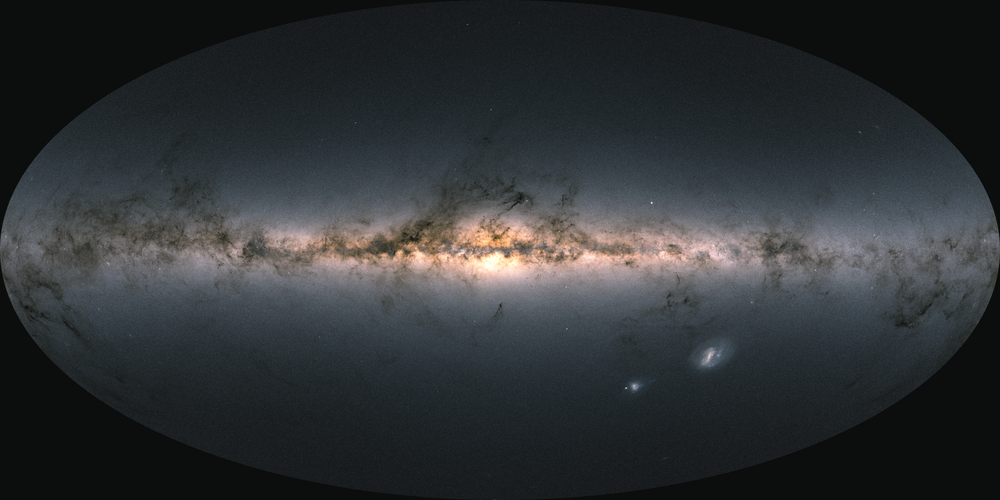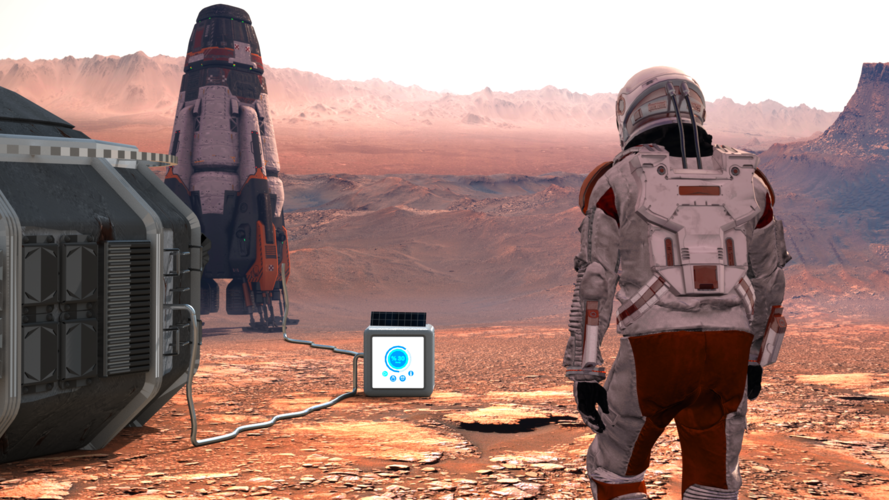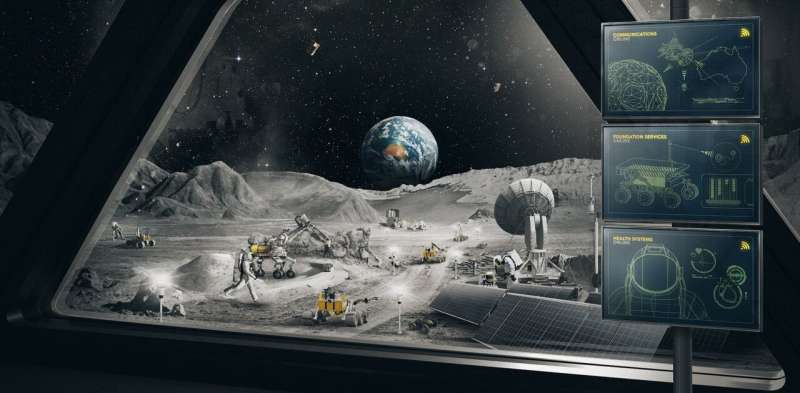
Copernical Team
IXPE checks out x-rays from extreme objects
 NASA's Imaging X-ray Polarimetry Explorer (IXPE) mission, a joint effort with the Italian Space Agency, has returned data that no other spacecraft has obtained before from a few extreme cosmic objects.
Launched in December 2021, IXPE has detected polarized X-rays from three of its first six targets. Polarized X-rays carry unique details about where the light comes from and what it passes t
NASA's Imaging X-ray Polarimetry Explorer (IXPE) mission, a joint effort with the Italian Space Agency, has returned data that no other spacecraft has obtained before from a few extreme cosmic objects.
Launched in December 2021, IXPE has detected polarized X-rays from three of its first six targets. Polarized X-rays carry unique details about where the light comes from and what it passes t LAMOST Helps to Propose New Method Searching for Clusters in Andromeda Galaxy
 Making use of the LAMOST spectra data as the training sample, a research team led by Dr. WANG Shoucheng and Prof. MA Jun from National Astronomical Observatories of Chinese Academy of Sciences (NAOC) proposed a new method to search for star clusters in the Andromeda galaxy.
With this method, the researchers identified 117 new high-confidence cluster candidates in the Andromeda galaxy based
Making use of the LAMOST spectra data as the training sample, a research team led by Dr. WANG Shoucheng and Prof. MA Jun from National Astronomical Observatories of Chinese Academy of Sciences (NAOC) proposed a new method to search for star clusters in the Andromeda galaxy.
With this method, the researchers identified 117 new high-confidence cluster candidates in the Andromeda galaxy based UN wants worldwide weather warning systems within 5 years
 The United Nations said Wednesday it wanted the whole world covered by weather disaster early warning systems within five years to protect people from the worsening impacts of climate change.
A third of the world's people, mainly in the least-developed countries and developing small island states, are without early warning coverage, the UN said, with 60 percent of people in Africa wide open
The United Nations said Wednesday it wanted the whole world covered by weather disaster early warning systems within five years to protect people from the worsening impacts of climate change.
A third of the world's people, mainly in the least-developed countries and developing small island states, are without early warning coverage, the UN said, with 60 percent of people in Africa wide open Researchers find Spinosaurus' dense bones allowed it to hunt underwater
 Spinosaurus, the largest known predatory dinosaur, had bones dense enough to submerge itself to hunt, according to a study released Wednesday.
A group of paleontologists analyzed the density of Spinosaurid bones and compared them to animals such as penguins, hippos, and alligators to determine that both the Spinosaurus and close relative Baryonyx could swim and actively pursue prey in t
Spinosaurus, the largest known predatory dinosaur, had bones dense enough to submerge itself to hunt, according to a study released Wednesday.
A group of paleontologists analyzed the density of Spinosaurid bones and compared them to animals such as penguins, hippos, and alligators to determine that both the Spinosaurus and close relative Baryonyx could swim and actively pursue prey in t International Sea Level Satellite Takes Over From Predecessor
 On March 22, the newest U.S.-European sea level satellite, named Sentinel-6 Michael Freilich, became the official reference satellite for global sea level measurements. This means that sea surface height data collected by other satellites will be compared to the information produced by Sentinel-6 Michael Freilich to ensure their accuracy.
Launched from Vandenberg Air Force Base in November
On March 22, the newest U.S.-European sea level satellite, named Sentinel-6 Michael Freilich, became the official reference satellite for global sea level measurements. This means that sea surface height data collected by other satellites will be compared to the information produced by Sentinel-6 Michael Freilich to ensure their accuracy.
Launched from Vandenberg Air Force Base in November Chef Jose Andres plans paella dinner for Axiom space voyage in April
 Meals are set to get a little more exciting at the International Space Station next month as celebrity chef Jose Andres and his company ThinkFoodGroup will send two dinners to space, as a multinational crew joins astronauts already in orbit.
Andres is giving two dishes - the popular rice dish Chicken and Mushroom Paella and the pork and tomato offering Secreto de Cerdo with Pisto - to
Meals are set to get a little more exciting at the International Space Station next month as celebrity chef Jose Andres and his company ThinkFoodGroup will send two dinners to space, as a multinational crew joins astronauts already in orbit.
Andres is giving two dishes - the popular rice dish Chicken and Mushroom Paella and the pork and tomato offering Secreto de Cerdo with Pisto - to Russian space agency wants foreign partners to pay it in rubles
 The Russian space agency said Wednesday it will insist its international partners pay it in rubles, after President Vladimir Putin said Russia will only accept ruble payments for gas deliveries to "unfriendly countries".
"We will also conclude all our external agreements in rubles," the Roscosmos space agency head Dmitry Rogozin was quoted as saying by the official Tass news agency.
Hour
The Russian space agency said Wednesday it will insist its international partners pay it in rubles, after President Vladimir Putin said Russia will only accept ruble payments for gas deliveries to "unfriendly countries".
"We will also conclude all our external agreements in rubles," the Roscosmos space agency head Dmitry Rogozin was quoted as saying by the official Tass news agency.
Hour Gaia finds parts of the Milky Way much older than expected

Using data from ESA’s Gaia mission, astronomers have shown that a part of the Milky Way known as the ‘thick disc’ began forming 13 billion years ago, around 2 billion years earlier than expected, and just 0.8 billion years after the Big Bang.
Turning astronaut waste into fuel on Mars
 Image:
Turning astronaut waste into fuel on Mars
Image:
Turning astronaut waste into fuel on Mars Australia wants a space industry. So why won't we pay for the basic research to drive it?

In the past few years, Australia has formed its own space agency and launched a defense "space command". Billions of dollars for defense, and hundreds of millions for civilian space, have been allocated from the public purse to develop capability in this growing sector.
This funding covers the Moon-to-Mars Program, the SmartSat Cooperative Research Center, the Modern Manufacturing Initiative, opportunities in defense, various state-funded projects such as SA-SAT, and more.
This level of investment is unquestionably a good thing. But the great majority of it supports applied research and engineering, and commercialization of outcomes. None of the new funding goes to basic research.
In the United States, Canada, United Kingdom, France, Germany, Italy, India, South Korea, China, Russia, and United Arab Emirates—to name a few—basic research in space and planetary science, and science missions, are key elements in strategies to grow their sectors. In Australia, this kind of fundamental work only gets around A$2 million a year. It hasn't budged in a decade.
Why basic research is important

